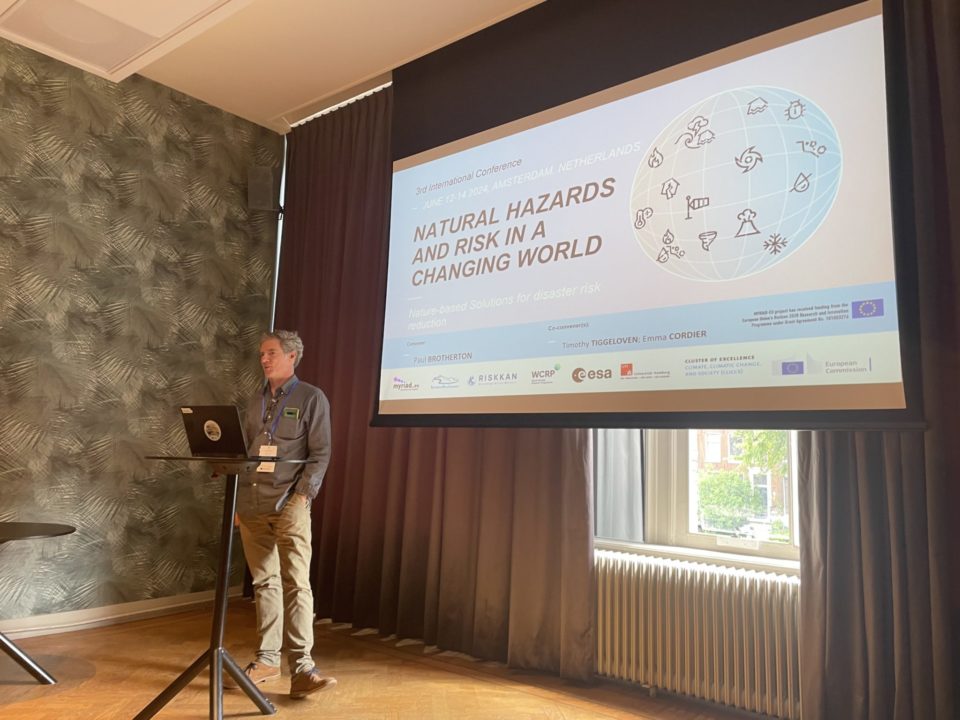
Nature-Based Solutions for Disaster Risk Reduction – 3rd International Conference on Natural Hazards and Risks in a Changing World
-
Nature based solutions
-
Global Europe
On June 14th, Wetlands International Europe hosted an insightful session on “Nature-Based Solutions” (NBS) for Disaster Risk Reduction.
This session was part of the 3rd International Conference on Natural Hazards and Risks in a Changing World, held in Amsterdam from June 12th to 14th, 2024.
Co-convened by Paul Brotherton of Wetlands International Europe and Timothy Tiggeloven from Vrije Universiteit Amsterdam, the session featured three key presentations and interactive segments with the audience.
Paul Brotherton kicked off the session with an overview of the potential that nature-based solutions hold for disaster risk reduction. He shared examples of how wetlands solutions, such as river and sponge restoration, can mitigate floods and droughts.
These solutions not only benefit nature but also provide numerous co-benefits to people and society.

Dr. Sungju Han followed with insights from a study analyzing various perspectives on NBS projects for flood risk reduction. The study highlighted the importance of identifying ideal-typical narratives and analyzing stakeholders’ attitudes and beliefs. This approach can improve the acceptance of NBS by fostering a better understanding of stakeholder interactions and consensus-building processes.
Continuing the focus on stakeholders, Marco Cinelli presented ongoing research on a framework designed to assess the co-benefits provided by NBS. Using multiple criteria decision analysis and value-focused thinking, this framework will allow stakeholders to effectively evaluate progress towards their objectives by defining hundreds of criteria.
Understanding stakeholders’ narratives and beliefs, along with using harmonized NBS assessment frameworks, is crucial for the successful implementation of NBS. However, financing remains a key challenge. Guillermo Garcia Alvarez addressed this by presenting findings from the Naturance project, which explores the technical, financial, and operational feasibility and performance of NBS. Assessing the economic co-benefits of NBS is essential for attracting public and private investment, helping to maximize investors’ willingness to fund these solutions.
The session concluded with a Q&A segment, where participants sought clarifications on research methods and models. This opened up a valuable discussion on ways to mainstream NBS for disaster risk reduction moving forward.
